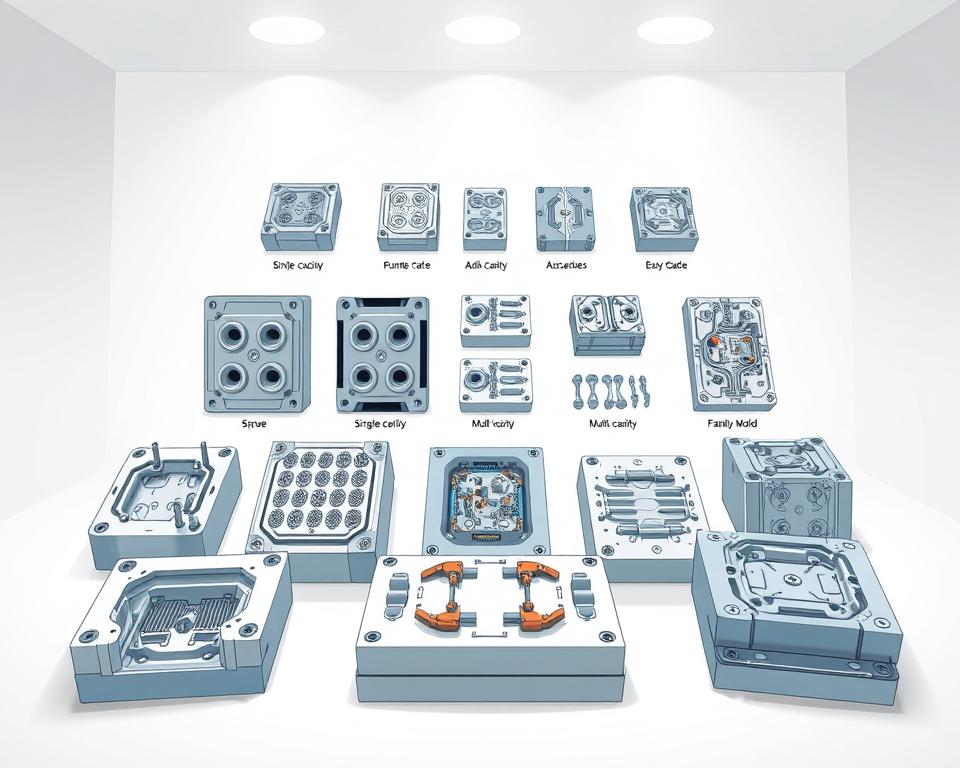How to Secure Injection Molding Services with Chinese Suppliers
The important meeting has recently finished, your new product is a go, the timeline is aggressive, and the budget is… well, let’s just say it’s tight.. And suddenly someone—perhaps your superior or the finance head—says the fateful words that make any project manager’s heart skip a beat: “We should look at sourcing this from China.”
You nod, of course. It makes sense on paper. The cost savings can be huge. Yet your thoughts are already spinning. You know the rumors, don’t you? The nightmare of defective parts, opaque communication, and delayed, off-spec shipments. It feels like walking a thin line between big savings and total project failure.
However, here’s the reality. Sourcing plastic mold can be a calculated project. It’s no different from any structured project. And as with any project, success depends on your methodology. It isn’t about the cheapest offer but about choosing the right supplier and running the process transparently. Ignore the nightmare anecdotes. Let’s go through a step-by-step guide to succeed.

Initial Step: Prepare Your Information
Before you mention “supplier” or browse Alibaba, organize your internal data. Honestly, more than half of all overseas manufacturing problems start right here, with a weak or incomplete information package. You can’t expect a factory on the other side of the world to read your mind. It’s akin to asking someone to price-build “a structure” with no details. You’ll get wildly varied quotes that are useless.
Aim to craft an RFQ package so precise and comprehensive it leaves no room for error. This package is your project’s foundation.
So, what goes in it?
First, your 3D CAD files. They’re essential. Provide files in common formats (e.g., STEP, IGS) to prevent import issues. This is the authoritative CAD geometry.
But 3D isn’t enough. Include precise 2D engineering drawings. This details critical info missing from the 3D file. Examples include tolerances (e.g., ‘25.00±0.05 mm’), material grade, surface finish requirements, and functional callouts. Any seal surfaces or critical hole sizes must be clearly labeled.
Next up, material. Avoid generic terms like “Plastic.” Nor just “ABS.” Be specific. Specify SABIC Cycolac MG38 in black, if that’s the resin you need. Why? Because plastic grades vary by the thousands. Specifying the exact resin grade ensures you get the strength, flexibility, UV resistance, and color consistency you planned for with plastic mold injection.
Your supplier might propose substitutes, but you must set the baseline.
Lastly, add your business data. State your EAU. They need clarity: is it 1,000 total shots or a million units per annum? The tool design, the number of cavities, and the price per part all hinge on this number.
Hunting for the Best Supplier
Now that your RFQ is pristine. who gets your RFQ? The web is vast but overwhelming. It’s easy to find a supplier; it’s hard to find a good one.
Your search will likely start on platforms like Alibaba or Made-in-China.com. They let you survey dozens of suppliers quickly. Treat them as initial research tools, not final solutions. You’ll want to quickly build a list of maybe 10 to 15 companies that look promising.
However, don’t end your search there. Consider using a sourcing agent. True, they charge a fee. But a good one has a vetted network of factories they trust. They are your person on the ground, navigating the language and cultural barriers. On your first run, this is like insurance. It’s schedule protection.
Another classic method? Trade shows. With budget permitting, Chinaplas or similar shows are invaluable. Meeting onsite is unbeatable. Inspect prototypes, interview engineers, and sense their capabilities. Plus, ask peers for referrals. Tap your professional contacts. A solid referral can be more valuable than any ad.
Separating Real Suppliers from Pretenders
After firing off that RFQ to a broad pool, estimates roll in. You’ll see ridiculously low offers and steep quotes. Now, sift through and shortlist 2–3 reliable candidates.
What’s the method? It blends technical checks with intuition.
Step one: audit communication. Do they respond quickly and clearly? Can they handle detailed English exchanges? But the key: do they probe your RFQ? A great supplier will review your RFQ and come back with thoughts. Example: “Should we add draft here for better ejection?” or “Your tolerance may require extended CMM time—okay?” Consider that a big green light. It proves their expertise and involvement. A “Sure, no issues” vendor often means trouble.
Next, dig into their technical capabilities. Request their machine list. Seek samples or case studies of comparable projects. Don’t pick a micro-molding shop for large components.
Finally, inspect the factory. You can’t skip this. You would never hire a critical employee without an interview, so why would you send tens of thousands of dollars for a tool to a company you’ve never truly vetted? You can travel or outsource a local inspector. They perform a one-day factory inspection. They confirm legitimacy, audit ISO 9001, inspect equipment condition, and gauge the facility. It’s a tiny cost for huge peace of mind.
Converting Digital Designs into Molded Parts
You’ve selected your partner. you’ve negotiated the price and payment terms—a common structure is 50% of the tooling cost upfront to begin work, and the final 50% after you approve the first samples. Now the real fun begins.
Your supplier’s first deliverable is a DFM analysis. DFM means Design for Manufacturability. It’s their professional review of your CAD. It will highlight potential issues like areas with thick walls that could sink, sharp corners that could cause stress, or surfaces without enough draft angle for clean ejection from the mold. A thorough DFM is a sign of a professional operation. It’s a two-way partnership. You iterate with their team to optimize the mold.
With DFM sign-off, toolmaking begins. Weeks on, you receive the thrilling “T1 samples shipped” notification. These are your initial mold shots. They are your moment of truth.
T1 parts usually require adjustments. It’s par for the course. You’ll find minor defects, off-spec dimensions, or finish issues. You supply feedback, they tweak the tool, and T2 plastic mold samples follow. This process might take a couple of rounds. Plan for this loop in your schedule.
At last, you get the perfect shot. It matches all specs, has a pristine finish, and works as required. This is your golden sample. You formally approve it, and this sample is now the standard against which all future mass-produced parts will be judged.
Crossing the Finish Line
Receiving the golden sample seems like victory, but you’re not done. Now comes full-scale production. How do you ensure that the 10,000th part is just as good as the golden sample?
Put a strong QC process in place. This often involves a pre-shipment inspection. Again, you can hire a third-party service. For a few hundred dollars, they will go to the factory, randomly pull a statistically significant number of parts from your finished production run, and inspect them against your 2D drawing and the golden sample. You receive a full report with images and measurements. After your approval, you release the shipment and final funds. This step saves you from a container of rejects.
Don’t forget shipping details. Know your shipping terms. Are you on FOB terms, where they load and you take over? Or is it EXW (Ex Works), where you are responsible for picking it up from their factory door? Your Incoterm selection drives landed expenses.
Sourcing from China is a marathon, not a sprint. It’s about building a relationship with your supplier. Treat them like a partner, not just a line item on a spreadsheet. Transparent dialogue, respect, and process discipline win. No question, it’s demanding. But with this roadmap, you can succeed, achieve savings, and maintain quality. You’re ready.
